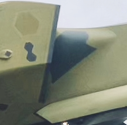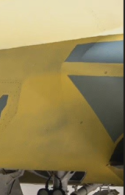J-20A is essetially a new aircraft from J-20 from construction perspective. Its production line is very different from J-20. So one can say that J-20A is equally new in every aspect as J-35A. Just give two examples here.
1. J-20A's DSI bump is differently constructed than J-20, see the following comparison. That is a large chunck of the airframe.
No middle ridge
View attachment 138418
Middle ridge probably metal
View attachment 138419
2. J-20A has the hump behind the cockpit, another large chunck of the airframe being different. That means that the bulkheads are different in shape, meaning all your forging press, molds are different IF J-20 used forging and J-20A contitue doing so. Or J-20A is switching from forging to 3D printing (big change). You have to do a big retooling if you kept old method unless J-20 always used 3D printing. This is to say that either J-20 is already up to the standard of J-35A long ago, or J-20A's new tooling has already paid.
Also keep in mind that J-20A is the real serial production variant (target), J-20 is the temparary solution with WS-10 being gap-filer. So J-20 production method should not be regarded as fixed/frozen J-20 program. Retooling of J-20A is part of the program, not something preventive.
In short, I see J-20A and J-35A equal in terms of latest production technology and method instead of J-35A being something much advanced which seems to be an opinion that many people held.


